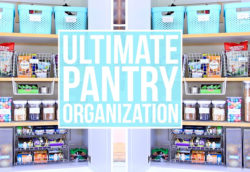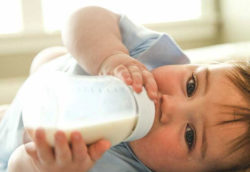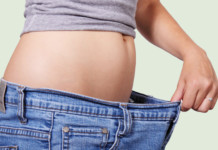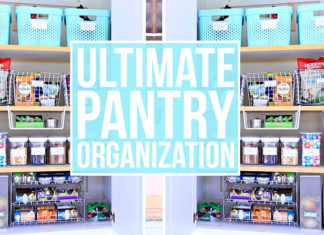As long as the babies are in the womb, they will get the food through the umbilical cord. They just relax in the womb and get everything needed from their mother. Once they enter the world, babies need to use their sucking reflexes to satisfy their hunger and get the nourishment. It is medium for both the baby and the mother to strengthen the attachment. As per the World Health Organization, no other solids or fluids are recommended for the babies other than breastfeeding till they reach the age of 6 months.
Discomforts are common during the journey of breastfeeding. Are your breasts painful? If you are nodding along, then you should read this article to known the ways to ease this discomfort.
What is Breast Engorgement?
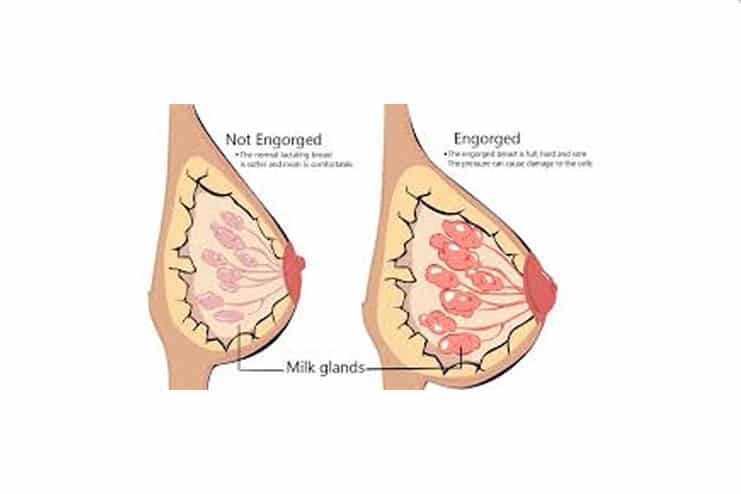
In moms with breast engorgement, breasts are overfull of milk and painful. Breasts appear hard, warm, and sensitive as if they are ready to burst. Nipples may appear flattened making difficult for the baby to latch on. If it is left untreated, it may lead to other breastfeeding problems. Identification and the intervention at the right time can help you to avoid the complication. This condition also occurs when the breast tissues are filled up by the blood and other fluids.
Causes of Breast Engorgement:

Breast engorgement is common after the delivery. It can also occurs few days and months after the delivery due to various reasons. Here are the following:
1. Excess production of milk:
Your breasts may start to produce the milk at its full strength soon after the baby gets their first milk. Milk ducts increase the production at once leading to the breasts increase in size.
2. Lack of feeding:
It is recommended to breastfeed the baby soon after the delivery. But sometimes moms may not feed their baby for the longer hours. This is due to the mom may be under the medication during the delivery process and are advised to stop the feeding till your body gets relief from the medication. Milk ducts start to produce the milk irrespective of this medication process.
3. Unsteady feeding patterns:
Maintaining the steady feeding patterns is important to regulate the steady production of the milk ducts. Skipping or reducing the feeds or stopping the breast feeding can increase the production of the milk. Breast engorgement may also occur when the baby suddenly stops to drink the milk.
4. Weaning:
Breastfeeding moms may continue to produce more milk even after the weaning resulting in the blocked ducts. These blocked ducts may trigger the pain and inflammation further leading to breast engorgement.
5. Prolonged usage of the nipple shields:
Nipple shield is especially beneficial in certain conditions such as inverted nipple. However they are recommended for the prolonged use as they build the barrier between your baby and breasts reducing the ability of the baby to empty the breasts properly.
6. Pressure on the milk ducts:
Sleeping on the stomach or wearing the accessories may put more pressure over the milk ducts hindering the milk flow. This can increase the risk of developing blocked ducts.
7. Poor diet:
A diet that is rich in saturated fats with the poor water consumption can lead to blocked ducts.
8. Other causes:
• Mother and baby are separated after the delivery and mother is not pumping often
• Mother received excessive IV fluids that lead to the edema.
• Baby’s latching is not deep enough to get the adequate milk.
Symptoms of Breast Engorgement:
Here are a few symptoms of breast engorgement.
• Breasts feel painful and appear swollen and firm. Under the severe engorgement, breasts may feel warm and lumpy to touch. They appear shiny.
• Nipples get flattened. The dark area around the nipple may become very firm making harder for the baby to latch on
• Body temperature raises slightly and goes around 100.4 degrees Fahrenheit.
• There may be slightly swollen and lymph nodes under the armpit.
What Happens If The Breast Engorgement Gets Worse?
Severe breast engorgement is not only painful for you but also for your baby as well.
• Your baby may not get the sufficient milk as they cannot latch on
• You can not completely empty the breasts.
• Nipples may appear sore and cracked. This condition can make you to breastfeed your baby less further worsening the condition.
• Severe breast engorgement may also lead to the mastitis which is a breast infection where the milk ducts are blocked.
If any of the breast engorgement symptoms are recognized, it is recommended to take the tests. For the test, a sample of the breast milk or discharge and blood is collected to recognize any pathogens in the body.
How To Treat Breast Engorgement?

Here are a few home tips that are effective to ease the symptoms of breast engorgement:
1. Warm compress:
Warm compress is the effective and easy way to stimulate the blood flow of the sore areas. The increased blood flow will be helpful in alleviating the pain and aiding the healing process. Blood that is driven to the target tissues delivers the required levels of oxygen and nutrients that can remove the waste in the cells.
Massage the swollen area of the breast with the wash cloth dipped in the warm water 5-10 minutes before nursing. Using warm, moist compress and warm-hot shower with the gentle breast massage can stimulate the milk flow.
2. Regular feeding:
Feed your baby regularly and nurse as long as your baby is hungry. This can help to free up the breast tissues that are full of milk. Nurse your baby for at least every 1-2 hours. Gently massage the chest wall towards the nipple before nursing will help your baby to get the milk supply easily.
Regular breastfeeding is beneficial for both baby and mom in many ways. It provides ideal nutrition for babies and helps the baby to achieve healthy weight gain. It works like a magical wand to contact the uterus.
3. Cold Compress:
Apply cold compress over the breast 10-15 minutes after the nursing can help you to mitigate the pain and the swelling caused by the breast engorgement. Cold compress is recommended after the nursing as it hinders the milk flow further making it difficult for the baby to latch on.
4. Hot oil massage:
Hot oil helps to relax the muscles and thereby making it easy to express the milk. This process helps to drain out the milk easily from the breast.
Clove oil, being a heating spice, can be used to improve the circulation in the breasts. It is very powerful so make sure to dilute it with essential oil. Use only 1-2 drops per cup of the carrier oil.
5. Cabbage leaves:
This is a very common remedy that can do wonders. Wash the cabbage and apply them over the breasts between feedings. Leave it over the breast for 20 minutes not exceeding 3 times a day. Limit the use of cabbage as soon as the engorgement begins to subside as cabbage decreases the milk supply.
You can place the cabbage leaves in the refrigerator for about half an hour before using. Cut out the veins and place them over the breasts with the nipples exposed.
6. Express the milk using the breast pump:
This is one of the best ways to deal with the breast engorgement when milk comes in. Express the milk using the breast pump that you are comfortable with either the hand pump or the electrical one. Hand pump or a quality electric pump is to be used on a low setting as the engorged breast tissues are more prone to the damage. This can help to free up some space in your breast thereby reduces the hardness of the breast.
You can store the breastmilk in the feeding bottle for the later use. Freshly expressed milk can be kept at the room temperature of no more than 25 degrees centigrade for up to 6 hours.
7. Use a well-fitted supportive bra:
Wear a well fitted supportive bra to make you feel more comfortable. It is believed to prevent the sagging breasts. Wearing a bra during the day and night supports the structure of the breasts and relieves your breasts from the suffocation.
8. Sage Tea:
The key to alleviate the symptoms of breast engorgement especially during weaning is slow down or dry out the milk supply. Sage is the commonly used herb to reduce the milk supply. Sage is available from the health food stores. It has a very strong taste. You can use the sweetener to bring it to a taste comfortable for you. Drink a cup of this tea for every 6 hours to reduce the milk supply.
NOTE: This remedy is recommended only during weaning.
9. Nipple corrector:
If you are left with more reserves of milk sue to the poor latching abilities of your baby here is a great tool called nipple corrector that can help draw out the nipples. Just place the nipple corrector over the breast and the cup can draw out the nipples using the suction. Results are not permanent and this process should be repeated before the each feeding.
10. Bring in good diet:
Take plenty of fluids that may be water or coconut water. Water offers support to the body that is producing the milk. It can also reduce the blockage of fluids and milk in the ducts.
11. Take proper rest:
It is very common for the new moms to encounter the stress due to lack of sleep. Anxiety and the other physical changes during the postpartum period may make them to have the poor sleep. You need to make out some time to take care of yourself for the well-being from all the dimensions. Take rest as much as you can. do breathing and meditation for the peaceful mind. Relaxing can help your body to release more oxytocin that can ease the milk flow.
12. Medication:
Engorgement results in the inflammation. Hence a suitable anti-inflammatory drug prescribed by your doctor can help to alleviate the pain. Do not go for any personal medications as they may affect your milk supply. Your doctor may also prescribe you some gels or ointments for the tropical application over the nipples to reduce the inflammation.
Breast Engorgement and Low Milk Supply:
In most of the cases breast engorgement is associated with the over-supply of the milk. Here is the question on what to do with the engorgement when there is no or low supply of the milk.
1. Use a comb:
In the ancient times, some mothers have used the wide toothed comb to gently stroke the engorged breasts. This will be helpful for the circulation and the drainage.
2. Juice-Jar breast pump:
A little glass jar with an opening of 5cms or larger can work effectively to draw out the milk from the flattened nipples. Here are a few steps to follow:
• Fill the glass container with the very hot water and ensure not to burn yourself. You can wrap it with a towel. Ensure that the glass jar can resist the overheat.
• Empty the glass jar and cool the mouth of the container with the cold cloth and bring it down to the skin temperature.
• Place the breast covering the cooled mouth of the jar and make an air tight seal with your breast.
• Vaccum will be created when the air inside the glass jar begins to cool down. This can help to express the milk from the breast.
Tips To Prevent Breast Engorgement:
You can prevent the breast engorgement even before it occurs. Here are a few things that you should know about breast engorgement prevention.
• Ensure to keep moving the milk out of the breast continuously by feeding your baby regularly whenever they are hungry. Be sharp to notice the hunger signs of your baby like eagerly sucking the fingers, moving the head side to side in search of breast.
• Make sure that your baby is latching well and receiving the required amounts of milk. If your breasts are hard, ensure to soften them before nursing. Feed your baby for atleast 8 times a day.
• Let your baby to empty one breast completely before switching to the other breast.
In conclusion, breast engorgement is the temporary condition which is more common during the early phases of nursing. In most of the cases it goes away with on its own when your baby learns to latch on properly and feed well. Home remedies help you to alleviate the effects of breast engorgement. It is better to consult your doctor when the breast engorgement becomes severe and leads to severe pain and fever.

















